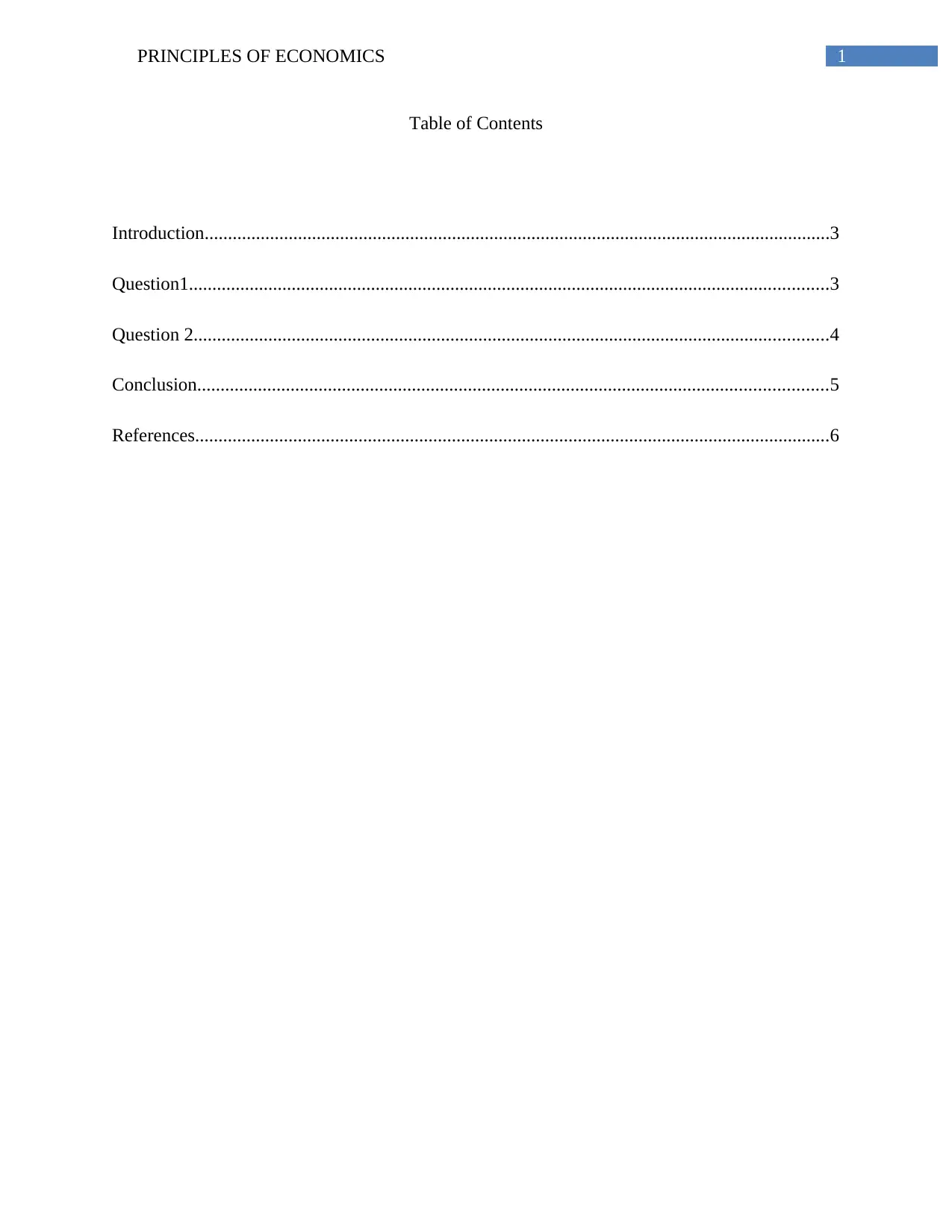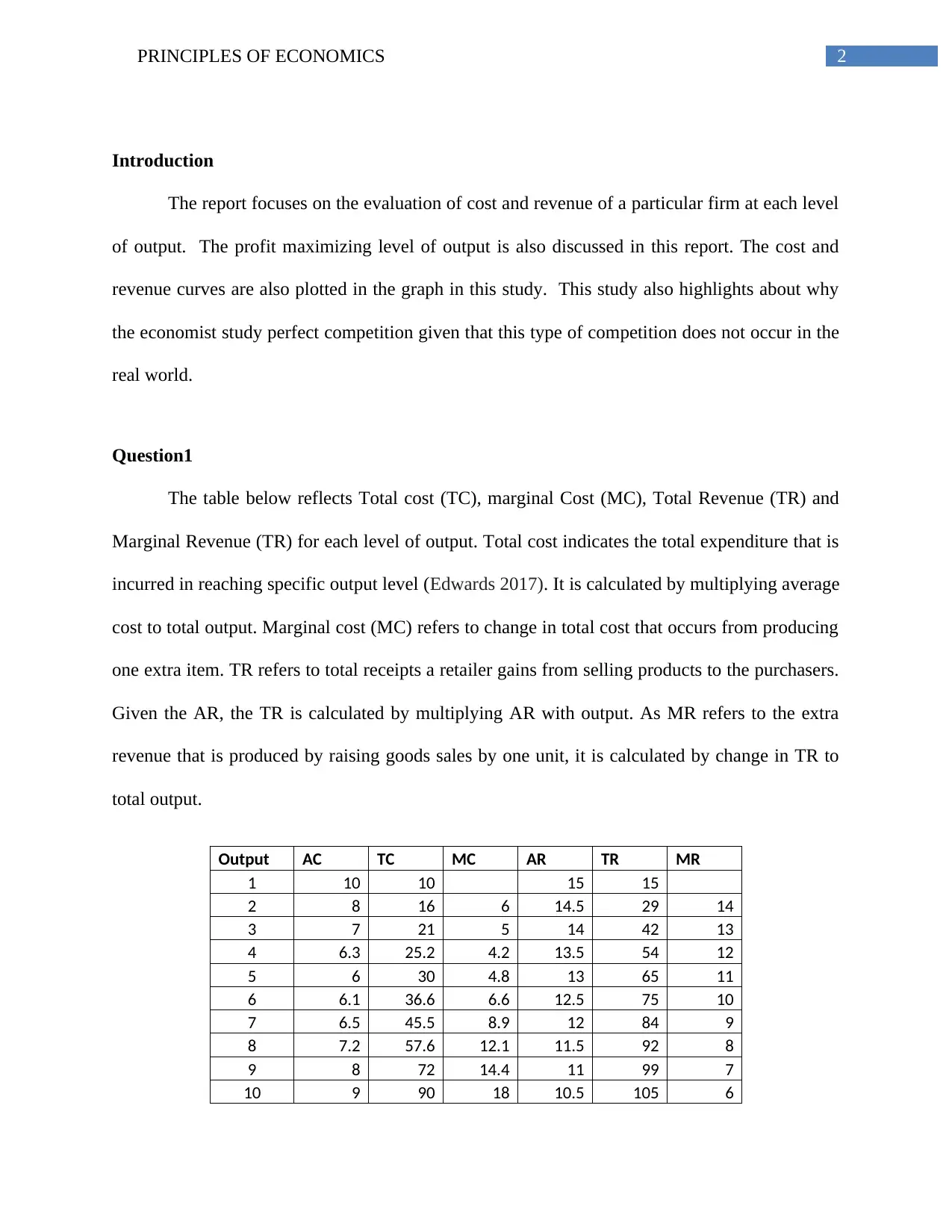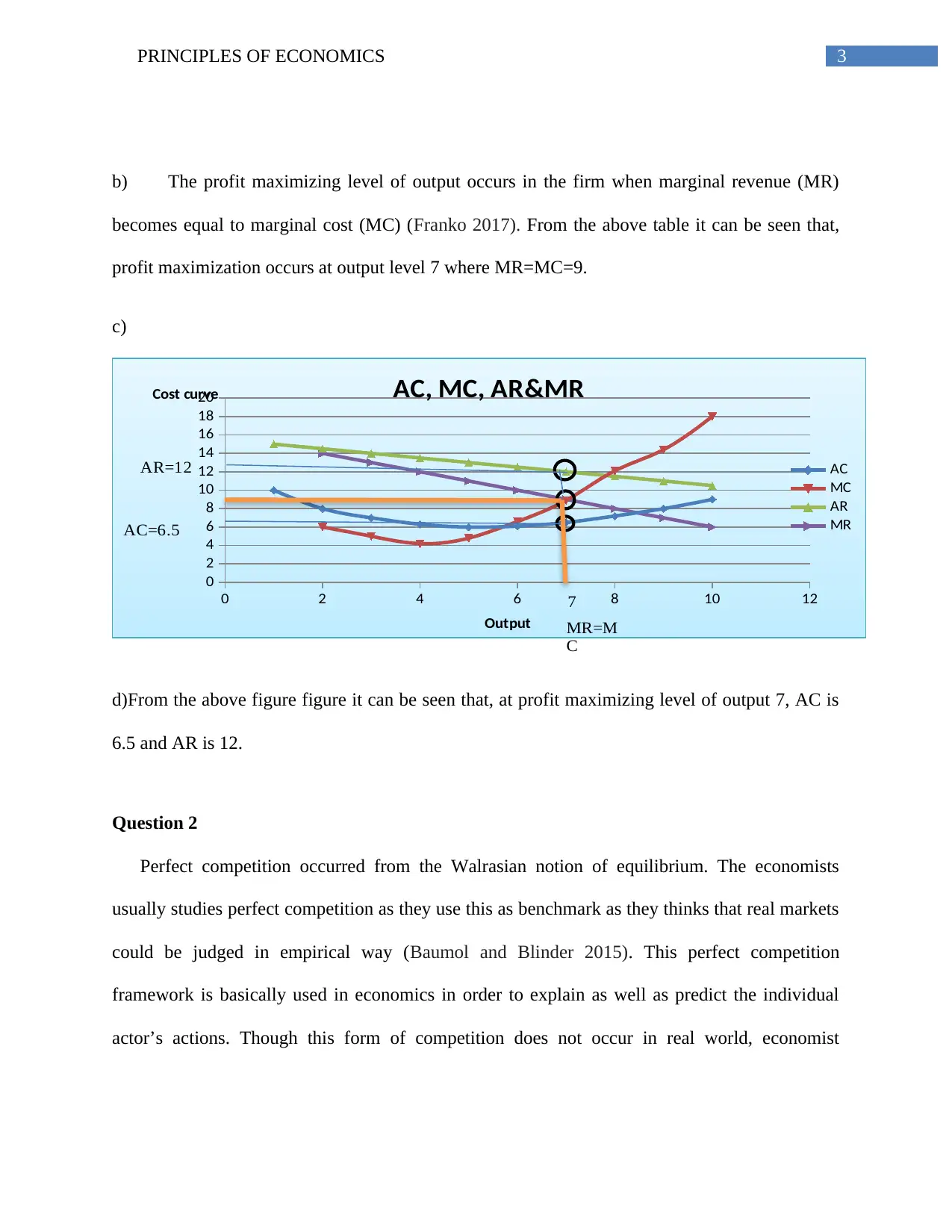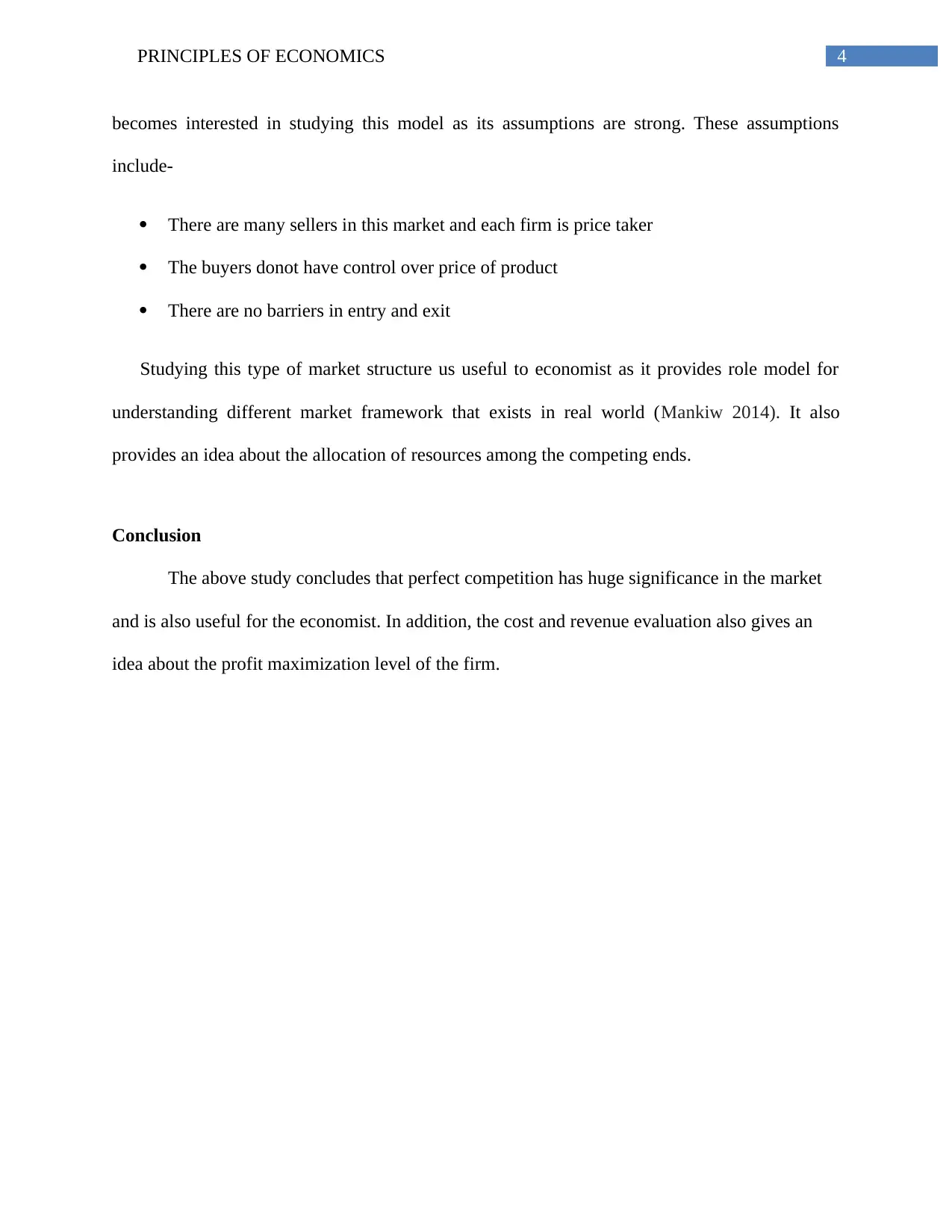Principles of Economics: Cost, Revenue, and Market Analysis
VerifiedAdded on 2020/05/28
|6
|678
|70
Homework Assignment
AI Summary
This economics assignment analyzes the cost and revenue of a firm at various output levels, determining the profit-maximizing output level. It includes a table with total cost, marginal cost, total revenue, and marginal revenue data, along with calculations to identify the point where marginal revenue equals marginal cost. The assignment also addresses the concept of perfect competition, explaining why economists study this market structure despite its absence in the real world, highlighting its use as a benchmark for understanding real-world market frameworks, and outlining the key assumptions of perfect competition, such as numerous sellers, price-taking behavior, and free entry and exit. The analysis concludes with a discussion on the significance of perfect competition and its usefulness for economists, along with insights into cost and revenue evaluation for profit maximization.
1 out of 6













![[object Object]](/_next/static/media/star-bottom.7253800d.svg)